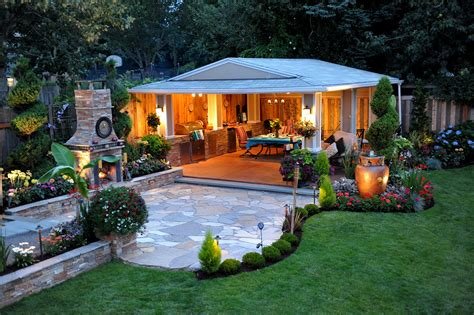Best Practices for Home Design and Decor
As homeowners, we all strive for a space that not only looks beautiful and reflects our personal style but also functions efficiently and promotes a sense of comfort and well-being. Whether you’re renovating, redecorating, or simply looking for new ways to elevate your home’s design, there are key practices and principles that can guide you towards achieving the perfect balance of aesthetics and functionality. In this blog post, we’ll explore the best practices for home design and decor, from choosing the right color palettes to incorporating natural elements and textures, as well as integrating technology seamlessly into design and maintaining a sustainable and eco-friendly approach. By considering these essential aspects of home design, you can create a space that not only looks great but also enhances your daily life. Join us as we delve into the world of home design and discover how to make the most of your living space.
Choosing the right color palettes
When it comes to designing a space, whether it’s a room in your home or a commercial space, choosing the right color palettes is crucial. The colors you select will set the tone for the entire space and can have a significant impact on the overall aesthetic and atmosphere. It’s important to consider the purpose of the space and the emotions you want to evoke when choosing a color palette.
One important factor to consider when choosing the right color palettes is the psychology of color. Different colors can evoke different emotions and have various effects on mood and energy levels. For example, warm colors like red, yellow, and orange can create a cozy and inviting atmosphere, while cool colors such as blue and green can promote relaxation and calmness.
Another thing to keep in mind when choosing the right color palettes is the concept of color harmony. It’s essential to select colors that work well together and create a cohesive and balanced look. This can be achieved through the use of complementary, analogous, or monochromatic color schemes.
Additionally, it’s crucial to take into account the lighting in the space when choosing the right color palettes. Natural and artificial light can have a significant impact on how colors appear, so it’s important to test out different colors in the actual space before making a final decision.
Creating functional and efficient layouts
When designing a space, it is important to consider functional and efficient layouts in order to maximize the usability of the area. The arrangement of furniture, flow of traffic, and overall organization of the space can greatly impact the way it is used on a daily basis.
One key aspect of creating a functional layout is to consider the purpose of the room. Whether it is a living room, kitchen, or office space, the layout should be tailored to accommodate the specific activities that will take place in that area.
In addition, the use of multi-functional furniture can help to optimize the space. For example, a sofa bed in a guest room or a coffee table with built-in storage can serve dual purposes and free up valuable floor space.
Finally, incorporating efficient traffic flow is essential to prevent any congestion and allow for easy navigation throughout the space. This can be achieved through strategic placement of furniture, careful consideration of doorways and openings, and the use of clear pathways.
Selecting the ideal furniture and accessories
When it comes to designing a space, one of the most crucial factors to consider is the furniture and accessories that will be incorporated into the design. The furniture and accessories not only serve a functional purpose but also contribute to the overall aesthetic appeal of the space. Therefore, it is important to carefully select the ideal furniture and accessories that complement the design concept and serve the needs of the users.
Before choosing any furniture or accessories, it is essential to have a clear understanding of the design concept and the aesthetic style that is to be achieved. Whether the design concept is modern, traditional, minimalist, or eclectic, the furniture and accessories should be in sync with the overall theme. It is important to consider the scale, proportion, and style of the furniture to ensure that it fits harmoniously within the space.
In addition to aesthetics, the functionality of the furniture and accessories is paramount. The pieces selected should not only look good but also serve a purpose. For example, a coffee table not only adds to the visual appeal of the living room but also provides a practical surface for placing drinks or books. Similarly, accessories such as decorative storage boxes or wall art should not only enhance the aesthetic appeal of the space but also serve a functional purpose.
Furthermore, the quality of the furniture and accessories should not be compromised. Investing in well-made, durable pieces will ensure that the design remains timeless and withstands the test of time. It is important to select furniture and accessories that are made from high-quality materials and craftsmanship, as these factors contribute to the longevity and durability of the pieces.
Incorporating natural elements and textures
When it comes to interior design, incorporating natural elements and textures can bring a sense of warmth and tranquility to any space. Whether it’s using organic materials such as wood and stone, or introducing natural textures like jute and rattan, these elements can create a harmonious and inviting atmosphere.
One of the key benefits of incorporating natural elements is the connection to the outdoors it can provide. Natural materials can help blur the lines between indoor and outdoor spaces, fostering a sense of continuity and harmony with the surrounding environment.
Additionally, natural textures such as wool, cotton, and linen can add depth and visual interest to a room. Whether it’s through a cozy area rug, a set of textured throw pillows, or a woven wall hanging, these elements can bring a touch of nature indoors, creating a serene and inviting atmosphere.
Overall, incorporating natural elements and textures into interior design can have a transformative effect on a space, bringing a sense of tranquility, warmth, and connection to the outdoors. By carefully selecting and integrating these elements, one can create a space that is both visually appealing and emotionally comforting.
Utilizing lighting to enhance ambiance
When it comes to interior design, lighting plays a crucial role in setting the mood and creating the right ambiance in a space. Whether it’s natural light streaming in through windows or strategically placed artificial light fixtures, the way a room is lit can have a significant impact on its overall look and feel.
One way to utilize lighting to enhance ambiance is by incorporating different types of light sources throughout a room. This can include overhead lighting such as chandeliers or pendant lights, as well as task lighting for specific areas like desks or reading nooks. Additionally, adding accent lighting to highlight certain features or artwork can help create a more dynamic atmosphere.
Another important aspect of utilizing lighting is considering the color temperature of the light. Cool whites can create a more invigorating and lively vibe, while warm yellows can evoke a sense of coziness and relaxation. By strategically choosing the right color temperature for different areas of a room, designers can effectively enhance the overall ambiance.
Furthermore, the use of dimmer switches and smart lighting controls can provide the flexibility to adjust the level of light according to the desired mood or activity. This allows for a customizable lighting experience that can adapt to different occasions and preferences.
Maximizing storage solutions for decluttering
When it comes to creating a clean and organized living space, maximizing storage solutions is key. Finding creative ways to store your belongings can help declutter your home and create a more open and inviting environment.
One effective storage solution is to utilize multi-functional furniture that serves a dual purpose, such as a storage ottoman or a bed with built-in drawers. These pieces not only provide storage space, but also help to save space in your home.
Built-in storage is another great option for maximizing storage solutions. Custom-built shelves, cabinets, and closets can be tailored to fit the specific needs of your space, allowing you to make the most of every inch of room.
Finally, utilizing vertical space can help to maximize storage in smaller areas. Wall-mounted shelves, hanging organizers, and overhead storage racks are all effective ways to make use of vertical space and keep your belongings organized.
Balancing aesthetics with practicality
When designing a space, it’s crucial to find the balance between aesthetics and practicality. A beautiful design is important, but it’s equally important for the space to be functional and serve its intended purpose. One way to achieve this balance is by carefully selecting furniture and accessories that are not only visually appealing but also practical in their use.
Another aspect to consider is the layout of the space. Creating a layout that flows well and makes the best use of the available space is key to achieving a balance between aesthetics and practicality. It’s important to consider the needs of the occupants and how they will interact with the space on a daily basis.
Additionally, the use of lighting can greatly impact the balance between aesthetics and practicality. Selecting the right lighting fixtures can enhance the visual appeal of the space while also providing the necessary illumination for tasks and activities.
Ultimately, finding the balance between aesthetics and practicality requires careful consideration of every aspect of the design process. By incorporating elements that are both visually pleasing and functional, a harmonious and balanced design can be achieved.
Integrating technology seamlessly into design
When it comes to creating a modern and functional space, integrating technology seamlessly into your design can make a world of difference. From smart home features to innovative gadgets, there are countless ways to incorporate technology into your interior design.
One of the key aspects of seamlessly integrating technology is to ensure that it complements the overall aesthetic of the space. This means carefully selecting devices and systems that blend in with the design rather than standing out in a jarring manner.
Another important consideration is the functionality of the technology within the space. It’s essential to incorporate devices that serve a purpose and enhance the user experience, whether it’s through improved convenience, energy efficiency, or entertainment.
Additionally, integrating technology seamlessly into design involves thoughtful planning and placement. This includes concealing wires, strategically positioning devices, and creating built-in features that seamlessly accommodate technology.
Applying the principles of feng shui
Feng shui is an ancient Chinese practice that focuses on harmonizing individuals with their surroundings. It is based on the idea that the environment can affect a person’s health, happiness, and success. When applying the principles of feng shui to interior design, it is important to consider the flow of energy, or chi, within a space.
One of the key principles of feng shui is to declutter and organize the space to allow for the smooth flow of energy. This can be achieved by getting rid of unnecessary items and keeping the space clean and tidy. By doing so, a sense of calm and tranquility can be created within the space.
In addition, incorporating natural elements such as plants, water features, and natural materials can help to balance the energy within a space. Plants are especially important in feng shui as they are believed to bring vitality and positive energy into a space. Water features, such as fountains or aquariums, are also used to promote the flow of positive energy.
Another important aspect of feng shui is the use of color. Different colors are associated with different elements and can have a significant impact on the energy within a space. For example, warm colors such as red and orange are associated with the fire element and are believed to promote energy and creativity, while cool colors such as blue and green are associated with the water element and are believed to promote calmness and relaxation.
Maintaining a sustainable and eco-friendly approach
When it comes to interior design, maintaining a sustainable and eco-friendly approach has never been more important. As the world becomes increasingly aware of the impact of human activity on the environment, more and more people are looking for ways to live and work in a way that minimizes their carbon footprint. This shift has also had a significant impact on the world of interior design, as designers and homeowners alike are looking for ways to create spaces that are not only beautiful and functional but also environmentally friendly.
One of the key principles of maintaining a sustainable and eco-friendly approach to interior design is to use reclaimed and recycled materials whenever possible. This can include anything from using reclaimed wood for flooring and furniture to incorporating recycled glass and metal into decorative items. By using materials that have already been used, you can help reduce the demand for new resources and minimize the amount of waste that ends up in landfills.
In addition to using reclaimed and recycled materials, it’s also important to consider the energy efficiency of the products and materials used in a design. This can include everything from choosing energy-efficient appliances and lighting fixtures to considering the insulation and airflow in a space. By prioritizing energy efficiency, you can not only reduce the environmental impact of a design but also save money on utility bills in the long run.
Finally, maintaining a sustainable and eco-friendly approach to interior design also involves considering the longevity of a design. This means choosing durable materials and timeless styles that will stand the test of time, rather than following trends that may quickly become outdated. By creating designs that will last for years to come, you can reduce the amount of waste produced by frequent renovations and updates.
Frequently Asked Questions
What are the best color palettes for home design?
When choosing a color palette for your home, consider the mood and atmosphere you want to create. Lighter shades can make a space feel larger and more airy, while deeper hues can add warmth and coziness.
How can I create a functional and efficient layout for my home?
To create a functional layout, consider the flow of the space and how you will use it. Arrange furniture to allow for easy movement and make sure to have designated areas for different activities, such as cooking, dining, and relaxation.
What should I consider when selecting furniture and accessories for my home?
When selecting furniture and accessories, consider the scale of the pieces in relation to the size of the room, as well as the overall style and theme you want to achieve. Choose items that are both visually appealing and practical for everyday use.
How can I incorporate natural elements and textures into my home design?
Bringing in natural elements such as wood, stone, and plants can add warmth and character to your home. Also, consider using a variety of textures, such as woven textiles, smooth metals, and rough natural materials, to create visual interest.
What are some tips for utilizing lighting to enhance ambiance in my home?
To enhance ambiance with lighting, consider using a combination of overhead, task, and accent lighting to create layers of light. Dimmer switches can also allow you to adjust the level of lighting to suit different activities and moods.
How can I maximize storage solutions for decluttering in my home?
To maximize storage, consider built-in cabinetry, under-bed storage, and multi-functional furniture with hidden storage compartments. Utilize vertical space with shelves and wall-mounted organizers to keep surfaces clear and minimize visual clutter.
What are some ways to balance aesthetics with practicality in home design?
Balancing aesthetics with practicality involves finding the right mix of style and function. Choose durable and easy-to-maintain materials for high-traffic areas, while also incorporating decorative elements that reflect your personal taste and style.
How can I seamlessly integrate technology into my home design?
To seamlessly integrate technology, consider hidden outlets, built-in speakers, and smart home devices that blend seamlessly with your décor. Conceal wires and cords to maintain a clean and cohesive look throughout the space.
What are some principles of feng shui that I can apply to my home design?
Incorporate principles of feng shui by arranging furniture to create a sense of balance and harmony, using natural materials and colors, and keeping pathways clear for energy flow. Pay attention to the placement of mirrors, as they can reflect and enhance positive energy in the space.
How can I maintain a sustainable and eco-friendly approach to home design?
To maintain a sustainable approach, consider using environmentally-friendly materials, such as reclaimed wood and recycled glass. Choose energy-efficient appliances and lighting, and incorporate natural ventilation and passive heating and cooling techniques into your home design.




